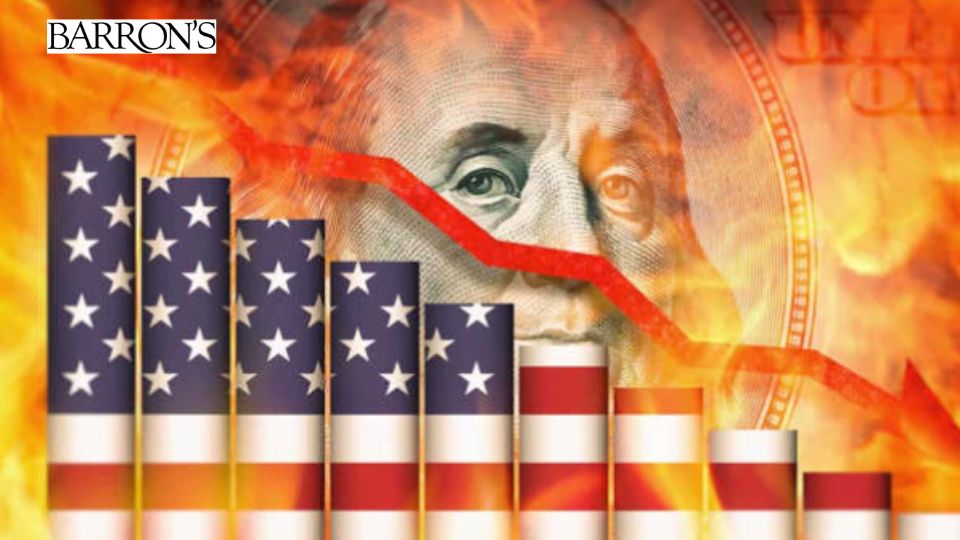
Global investors have soured more on U.S. bonds than stocks in the recent market turbulence, and their asset sales are contributing to the surprising decline in the U.S. dollar.
A new assessment of where global investors are putting their money confirms that foreign investors have been selling both bonds and stocks since President Donald Trump’s April 2 announcement of so-called reciprocal tariffs. While foreigners have recently resumed net purchases of stocks, bond investors continue to be net sellers, according to Exante Data. The firm tracks investments globally by exchange-traded funds and mutual funds.
Exante uses a proprietary analysis to interpret data provided by Emerging Portfolio Fund Research. The weekly data provide a window into fund activity that could be reflective of the behavior of a larger pool of investors.
The trend of bond sales and other asset reallocations is likely to continue to put downward pressure on the dollar, though strategists say it is too early to say how long the trend will last.
Jens Nordvig, CEO of Exante Data, sees several milestones in global investors’ behavior under the Trump presidency.
Following the U.S. election, investors in both foreign and domestic mutual funds and ETFs poured money into U.S. assets, particularly stocks, at record levels.
But U.S. and foreign investors slowed their purchases of U.S. fixed-income assets in March when President Donald Trump announced Canada and Mexico tariffs, says Nordvig. A shift to outright selling began with Trump’s April 2 announcement of so-called reciprocal tariffs, Nordvig says.
Foreign funds sold $10.7 billion in U.S. stocks between April 3 and April 9, when Trump announced a 90-day pause on some tariffs. U.S.-based funds were net buyers of $37.5 billion in U.S. stocks in that period.
Bond sales were more consistent. Foreign funds pulled an estimated $14.2 billion from U.S. Treasuries and corporate bonds in the two weeks ending April 16. In the same period, U.S.-based funds had outflows of $11.4 billion from U.S. fixed income.
U.S.-based stock funds, meanwhile, saw outflows of $9.5 billion from U.S. equities in the week that ended April 16, while foreign funds were net buyers of $8.5 billion.
Exante’s analysis showed European-based funds had the largest outflows from U.S. assets among foreign investors during the two weeks of market turbulence.
Germany and other European states announced plans in March to allow their governments to take on more debt and to increase defense spending. That prompted European investors to shift from U.S. to European stocks.
Nordvig said the impact of asset reallocation by many large institutions has yet to be seen.
“When these big institutions like pension funds and insurance companies move, it often takes many months before they really implement the shift…It’s not like a hedge fund where they make a decision and a couple of hours later, they have shifted,” he said.
The U.S. dollar index has lost about 10% from its January high. The decline in the dollar is unusual since it is counter to the usual safe-haven trade that typically lifts the dollar when stocks sell off. Investors normally prefer U.S. assets during global turmoil.
The moves lower in the dollar could also be large because they are reversing the rush into U.S. assets after the November election.
“The market was cherry picking growth-friendly policies, and then there was a reality check,” said Athanasios Vamvakidis, global head of G-10 foreign exchange strategy at Bank of America. The expectations for U.S. policy were too optimistic.
Because U.S. stock investments were in dollars, foreign investors may not have hedged the way they might have in other markets. When the dollar acts as a safe haven, as it usually has, its value increases and it acts as a natural hedge against a declining stock market.
Bank of America estimates that European and other foreign investors may not have hedged as much as $5 trillion of their dollar exposure in U.S. stocks—or about 28% of their holdings. But some of these investors could find they need to hedge or reduce stockholdings, pressuring the dollar either way.
Vamvakidis said central banks so far appear to continue buying dollars as the currency loses value, to maintain their reserve levels. He said the greenback would be much lower otherwise.
Vamvakidis said if there is a favorable turn in U.S. policies, the dollar could benefit.
“But I don’t think we go back to where we were because I think the rest of the world has crossed a red line, and they will try to reduce dependence on the U.S. on trade, on defense and everything. There’s no way back,” he said.
Story by - Patti Domm,

